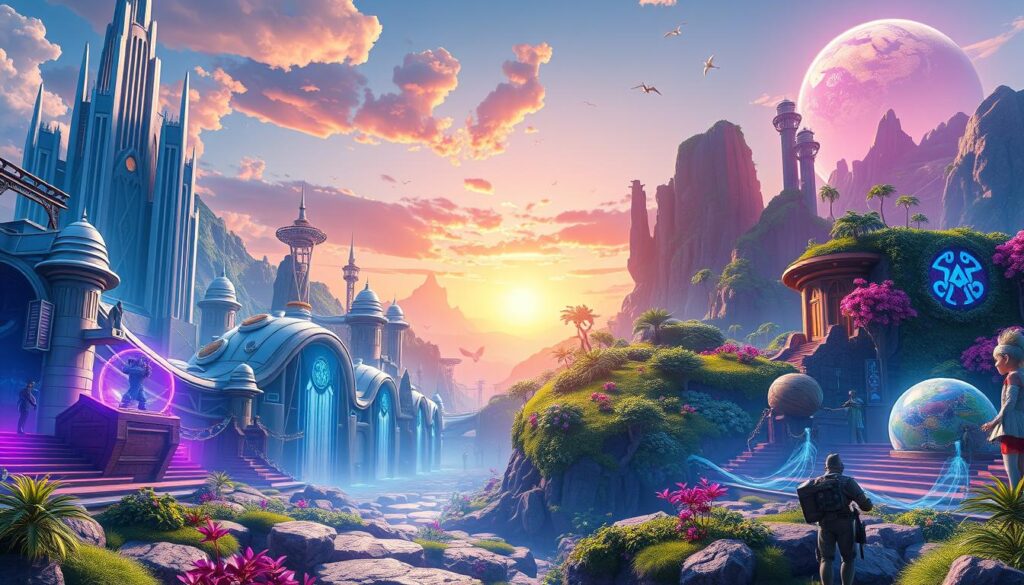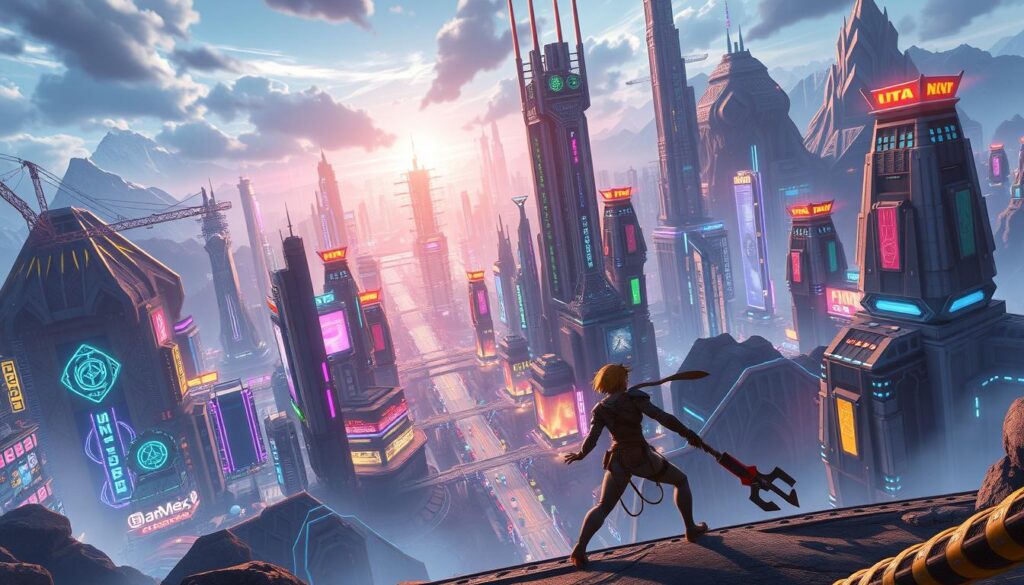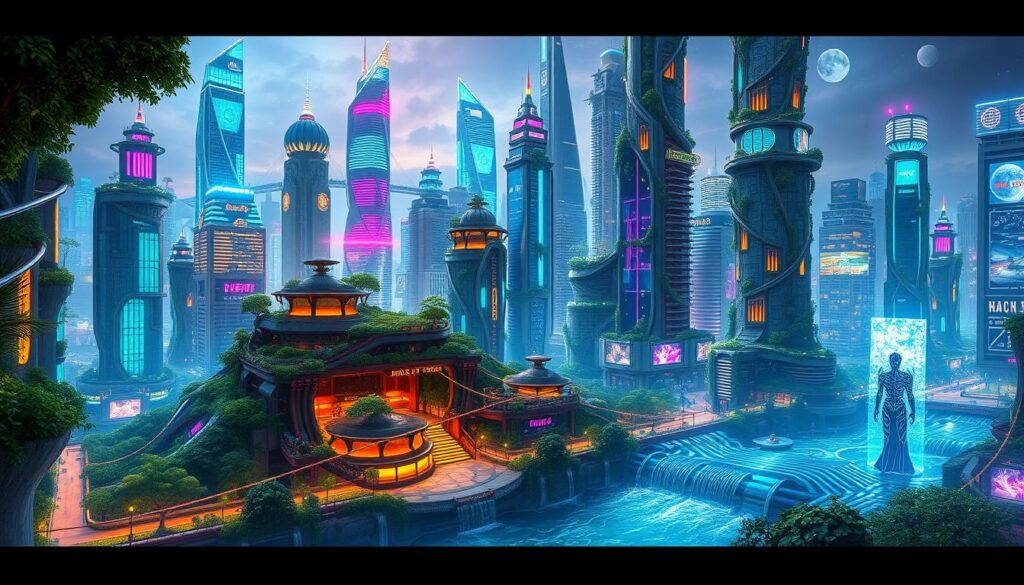CGI animation merges artistry with technology, crafting vivid digital worlds that enchant and captivate audiences. By integrating computer-generated imagery with advanced animation techniques, creators are able to deliver storylines that transform traditional storytelling into immersive experiences. Industry pioneers like Pixar and DreamWorks have consistently pushed the envelope, breathing life into both characters and fantastical landscapes. With a rich history marked by significant innovations, CGI animation has redefined visual narratives and continues to be a driving force in films, television, and gaming.
Key Takeaways
- CGI animation captivates audiences through immersive storytelling.
- Pioneers like Pixar and DreamWorks have advanced the art form significantly.
- Innovations in CGI have transformed visual narratives in multiple media.
- Combining artistry and technology is essential for creating compelling digital worlds.
- CGI animation plays a critical role in modern filmmaking and gaming.
The Evolution of CGI Animation
The evolution of CGI animation has been marked by a series of noteworthy milestones that have shaped the industry. From its early beginnings in the 1960s, CGI was initially utilized for scientific and military applications. As time progressed, this technology found new avenues in entertainment and storytelling.
Early Beginnings and Milestones
The journey of CGI animation took a significant leap with the introduction of pioneering films and techniques. Notable milestones in animation include the release of “Toy Story” in 1995, which was the first fully CGI animated feature film. This groundbreaking work opened the door for studios to explore computer-generated imagery in storytelling.
Technological Advancements Over the Years
The landscape of CGI has continuously evolved due to technological advancements. Innovations such as real-time rendering, enhanced GPU processing, and the emergence of virtual reality have made CGI animation more accessible and sophisticated. Additionally, improvements in shading techniques and 3D modeling have further refined the aesthetic quality and depth of animations, transforming the evolution of CGI into an essential part of modern filmmaking.
| Year | Milestone | Impact |
|---|---|---|
| 1960 | First Computer Graphics | Foundation for CGI development |
| 1995 | Release of Toy Story | First fully CGI animated film |
| 2001 | Shrek Releases | Blended CGI with character-driven storytelling |
| 2010 | Introduction of 3D Animation in Films | Enhanced audience immersion |
| 2020 | Virtual Reality Experiences | New avenues for animated storytelling |
Understanding the Basics of 3D Modeling
3D modeling represents a crucial component of CGI animation. It involves creating three-dimensional representations of objects or environments within a digital space. The importance of 3D models cannot be overstated, as they serve as the foundation on which animators build their narratives, shaping characters, settings, and even props essential to storytelling.
The Importance of 3D Models in CGI Animation
Effective 3D modeling enhances the realism and depth of any animated project. Accurate 3D models allow animators to convey emotions through character design and create intricate environments that capture viewers’ attention. This attention to detail contributes significantly to the audience’s overall experience and engagement with the film or animation.
Software Tools for 3D Modeling
Numerous modeling software options are available, each tailored to different aspects of 3D modeling. The right choice of modeling software can significantly affect the outcome of the project. Popular tools include:
| Software | Key Features | Ideal For |
|---|---|---|
| Autodesk Maya | Comprehensive modeling, animation, and rendering capabilities | Professionals in film and gaming |
| Blender | Open-source platform with extensive features for modeling and animation | Independent creators and small studios |
| ZBrush | Advanced sculpting and detailing tools | Character modeling and intricate designs |
The Role of Visual Effects in CGI Animation
Visual effects serve as a powerful tool in CGI animation, profoundly contributing to the viewer’s immersive experience. These effects not only enhance the aesthetic appeal but also play a vital part in enhancing storytelling. By creating vivid and dynamic elements, visual effects help convey complex narratives, bringing the animated worlds to life in ways that traditional methods may struggle to achieve.
How Visual Effects Enhance Storytelling
VFX techniques such as compositing, motion tracking, and particle simulation are essential in creating visually stunning environments. Through these techniques, filmmakers can depict high-energy action sequences and fantastical scenarios, enriching the plot. The integration of CGI effects allows artists to manipulate elements that might be impossible to capture physically, inviting audiences deeper into the story.
The synergy between visual effects and narrative development proves beneficial for multiple genres. Whether it’s a heart-pounding adventure or an emotional drama, VFX can elevate the storytelling, making the experience more engaging. Viewers are not merely spectators; they become participants in the unfolding narrative, all thanks to the art of enhancing storytelling through visual effects.
Motion Graphics: A Unique Aspect of CGI Animation
Motion graphics represent a significant component of CGI animation, distinct in their approach and execution. By merging graphic design principles with animation techniques, motion graphics create engaging visual content that serves a variety of purposes across different industries.
Differentiating Motion Graphics from Traditional Animation
Understanding the difference between motion graphics and traditional animation is essential. While traditional animation often focuses on storytelling through character development and narrative arcs, motion graphics prioritize the conveyance of information through movement and visual effects. This makes motion graphics more suitable for commercial applications, as they excel in delivering messages swiftly.
Applications of Motion Graphics in Various Industries
The applications of motion graphics are vast and extend to numerous sectors. Here are some key areas where motion graphics play an essential role:
- Advertising: Brands utilize motion graphics to capture audience attention quickly, promoting products or services effectively.
- Entertainment: Motion graphics enhance visuals in films, music videos, and video games, contributing to an immersive experience.
- Education: Informational videos and presentations benefit from motion graphics, making complex ideas digestible and engaging.
- Corporate Communication: Internal training videos and presentations utilize motion graphics for clear communication of concepts and objectives.
In summary, the field of motion graphics offers unique advantages distinct from traditional animation, effectively serving various purposes across multiple industries.
Rendering: The Final Touch in CGI Animation
Rendering serves as the crucial last stage in CGI animation, transforming 3D models and animations into stunning 2D images or videos. Various rendering techniques significantly impact the quality and realism of the final output, making this process essential for producing lifelike visuals. Understanding these techniques allows artists and animators to effectively achieve their desired aesthetic.
Understanding Rendering Techniques
Several rendering techniques exist, each with its unique approach to producing high-quality visuals. Among the most widely used are:
- Rasterization: This technique converts 3D models into a grid of pixels, suitable for real-time rendering applications such as video games.
- Ray Tracing: This method traces rays of light to simulate realistic lighting and shadows, providing exceptional detail. It is favored in high-quality CGI finalization.
- Scanline Rendering: This approach processes one line of pixels at a time, allowing for quick previews while maintaining reasonably good visual quality.
Common Software Used for Rendering
A variety of rendering software can facilitate efficient CGI finalization. Below is a table outlining some popular options:
| Software | Features | Best Use Cases |
|---|---|---|
| V-Ray | Advanced lighting, realistic materials | Architectural visualization, product design |
| Arnold | High-quality ray tracing, easy integration | Film and VFX production |
| Blender | Open-source, supports multiple rendering engines | Independent projects, animation |
Breaking Down Computer Graphics
Computer graphics represent a fascinating blend of creativity and technology. They produce visual content that plays a crucial role in various domains. Understanding the different types of graphics and their applications enhances one’s appreciation of this digital art form.
Types of Computer Graphics
Computer graphics can be categorized into several types, each serving distinct functions in artistic and technical endeavors. Common types include:
- 2D Graphics: Flat images and illustrations typically used in web design, banners, and user interfaces.
- 3D Graphics: Three-dimensional objects created for games, simulations, and films.
- Vector Graphics: Images constructed from paths defined by mathematical expressions, ideal for scaling without loss of quality.
Applications of Computer Graphics in Various Fields
The applications of CGI extend across many industries, showcasing the versatility and necessity of computer graphics today. Some of the key fields include:
- Gaming: Enhances player immersion through realistic characters and environments.
- Film Production: Elevates storytelling through special effects and animated scenes.
- Architectural Visualization: Creates lifelike representations of buildings before construction.
- Scientific Simulations: Visualizes complex data, aiding in research and understanding.

Animation Software: Choosing the Right Tool
Selecting the appropriate animation software plays a critical role in the success of CGI animation projects. Various options cater to both beginners and experienced professionals, facilitating different aspects of the animation process. Understanding the available choices and how to select the best fit is essential for achieving desired results.
Top Animation Software for Beginners and Professionals
Several animation tools stand out in the market, each targeting specific needs and levels of expertise. Popular options include:
- Adobe After Effects: Ideal for motion graphics and visual effects, widely used in the industry.
- Blender: A free, open-source software suitable for various animation projects, from simple to complex.
- Cinema 4D: Known for its intuitive interface, making it a strong choice among both beginners and seasoned animators.
- Maya: A professional-grade software popular in film and game development, offering advanced features for 3D animation.
Criteria for Selecting Animation Software
When choosing animation tools, several criteria should guide decisions:
| Criteria | Importance | Considerations |
|---|---|---|
| User Interface | High | Easy navigation can improve efficiency. |
| Features | High | Advanced options may be necessary for specific projects. |
| Support Resources | Medium | Tutorials, forums, and customer service can enhance learning. |
| Compatibility | High | Software should work with other tools in the animation pipeline. |
Beginners often prefer user-friendly software, while professionals may seek out tools that offer sophisticated functionalities to cater to complex projects. Understanding personal goals will lead to informed choices in selecting animation software that meets specific needs.
Texture Mapping in CGI Animation
Texture mapping represents a vital component in the realm of CGI animation, profoundly influencing realism in animation. By integrating two-dimensional images onto three-dimensional models, this technique adds intricate details and surface attributes, which elevate the audience’s overall visual experience. Without effective texture mapping, animated characters and environments can appear flat and lifeless, severely diminishing their impact.
The Role of Texture Mapping in Realism
Incorporating texture mapping into CGI helps achieve a heightened sense of realism. This process not only provides depth but also creates a more believable interaction between characters and their surroundings. For instance, the use of detailed textures can simulate the appearance of skin, fabric, and natural elements, allowing viewers to immerse themselves fully in the animated world. The authenticity created through texture mapping plays a crucial role in designing both characters and landscapes that resonate with audiences.
Techniques for Effective Texture Mapping
Several texture techniques can be employed to maximize the effectiveness of texture mapping. The two primary methods include:
- UV Mapping: This technique involves unwrapping a 3D model into a 2D representation, enabling precise placement of textures onto the model’s surfaces.
- Bump Mapping: This method simulates the appearance of surface detail without altering the actual geometry, enhancing visual complexity.
Using these methods enhances the overall realism in animation, making animated scenes more captivating and engaging for viewers.
Rigging: Creating Life-Like Characters
Rigging serves as a fundamental aspect of 3D animation, enabling animators to breathe life into their creations. By establishing a skeletal structure for 3D models, the rigging process allows for realistic movement and expression, enhancing character believability. The intricacies of rigging characters involve strategically placing bones and joints, facilitating smooth animations that mimic real-life motions.
Understanding the Rigging Process
The rigging process requires a meticulous approach to ensure that the movements of a character appear natural. It begins with defining the character’s anatomy and creating a hierarchy of bones. As animators manipulate these bones, adjustments can be made to achieve the desired motion. This process is crucial for animating facial expressions, gestures, and body movements, making it an essential step in character development.
Tools and Software for Rigging
Numerous tools and rigging software exist to aid artists throughout the rigging process. Popular options such as Autodesk Maya and Blender provide extensive features that streamline character setup. These platforms offer user-friendly interfaces alongside powerful functionalities, making them suitable for both beginners and seasoned professionals. By using specialized rigging software, animators can enhance their productivity and effectiveness, ultimately leading to more compelling animations.
Keyframing: The Art of Animation
Keyframing serves as a cornerstone of animation techniques, enabling animators to create dynamic movement and fluid transitions. By marking specific frames, keyframing allows for detailed control over timing, position, and style within a sequence. Understanding the fundamentals of keyframing is crucial for anyone looking to excel in CGI animation.
The Basics of Keyframing
Keyframing involves the selection of critical points in an animation timeline that signify important changes. Each keyframe can dictate various parameters such as location, rotation, and scale. This technique is pivotal in achieving a lifelike representation of motion, making it easier to visualize complex actions.
Best Practices for Keyframing in CGI Animation
Adhering to the best keyframing practices can significantly enhance the quality of your animations. Here are some effective tips to keep in mind:
- Maintain Smooth Transitions: Gradual shifts between keyframes ensure a seamless flow of motion.
- Adjust Timing: Vary the timing between keyframes to add personality and nuance to the animation.
- Consider Easing: Apply easing in and easing out techniques to create more natural acceleration and deceleration.
- Preview Frequently: Regularly check your animation to catch any inconsistencies and make necessary adjustments.
- Use Layering: Organize keyframes on different layers for better management and easier edits.
By mastering keyframing, animators can push the boundaries of their creativity and produce captivating CGI animations that resonate with audiences worldwide.
CGI Animation in Film and Television
CGI animation has transformed the landscape of film and television, offering creators unparalleled tools for storytelling. As audiences demand more immersive experiences, the use of CGI in film has risen dramatically. This evolution allows filmmakers to craft rich narratives with breathtaking visuals.
Notable Movies Featuring CGI Animation
A variety of notable CGI movies illustrate the profound effects of this technology on storytelling. Films such as Avatar, The Avengers, and Frozen have set inspiring benchmarks in visual storytelling. These films showcase not just the technical prowess of CGI but also its ability to evoke strong emotions and engage viewers at deeper levels.
The Impact of CGI on Modern Storytelling
The CGI animation impact on modern storytelling cannot be overstated. By enabling the creation of fantastical worlds and characters, CGI has broken the boundaries of traditional filmmaking. Filmmakers now possess the tools to realize their visions fully, captivating audiences with stunning scenes and intricate details. This technology not only enhances visual appeal but also elevates narrative depth, allowing storytellers to weave intricate plots enriched with dynamic visuals.
Video Games and CGI Animation
CGI animation holds a pivotal role in the realm of video games, serving as the backbone for creating dynamic and immersive environments. Through stunning visuals and lifelike characters, CGI in gaming significantly enhances the overall experience for players. The intricate design and fluid animations bring not just the world to life but also enhance narratives, ensuring players become fully engaged in their adventures.
The Importance of CGI Animation in Gaming
The inclusion of CGI in gaming leads to various benefits that elevate the immersive quality of animated video games. These advantages encompass:
- Enhanced realism through detailed character models and environments.
- Improved storytelling by visually illustrating complex narratives.
- Dynamic interactions that create a more engaging gameplay experience.
Advancements in CGI for Game Development
Recent advancements in CGI technology have markedly transformed game development practices. With the emergence of powerful graphics engines like Unreal Engine and Unity, developers now possess the tools necessary to produce high-quality visuals in real-time. Notable advancements include:
- Real-time rendering techniques that allow immediate visual feedback during gameplay.
- Enhanced particle effects, contributing to lifelike explosions and weather phenomena.
- Improved motion capture technologies for more authentic character animations.

These innovations continue to push the boundaries of what is possible in animated video games, ensuring a constant evolution of player experiences and expectations. As the industry progresses, the synergy between CGI and gaming will undoubtedly lead to even more breathtaking adventures.
Advertising and CGI Animation
Brands are increasingly embracing CGI in advertising to craft visually compelling marketing materials that resonate with audiences. The use of CGI allows companies to present their products in innovative and engaging ways that traditional media may not achieve. With stunning visuals at their disposal, brands strengthen their storytelling and connect more effectively with potential consumers.
How Brands Use CGI Animation for Marketing
Marketing with CGI has transformed how brands communicate their product offerings. Companies utilize CGI to create immersive experiences that highlight product features, making them more desirable. This technique not only captures attention but also ensures that brand messages are memorable.
Case Studies of Successful CGI Advertising Campaigns
Several successful campaigns demonstrate the effectiveness of CGI in advertising. For instance, Apple frequently employs CGI to showcase the elegance and functionality of its products, presenting them as indispensable tools for modern living. Coca-Cola has also utilized CGI in campaigns that convey themes of happiness and togetherness, reinforcing its brand identity. These successful campaigns illustrate how CGI can powerfully convey brand stories while engaging audiences visually.
| Brand | Campaign Focus | Elements of CGI Used |
|---|---|---|
| Apple | Product Features | Realistic renderings, animations demonstrating functionality |
| Coca-Cola | Happiness and Togetherness | Vibrant animations, creative visual storytelling |
| Ford | Vehicle Performance | Dynamic sequences, lifelike environments |
| Nike | Brand Motivation | Engaging character animations, inspiring visuals |
The Future of CGI Animation
The animation landscape is on the brink of a significant transformation. As technology evolves, the future of CGI animation looks promising, with new possibilities on the horizon. Trends in animation such as artificial intelligence, machine learning, and augmented reality are expected to become more prevalent. These innovations will redefine creative processes, making them more efficient and opening up myriad artistic avenues.
Emerging Trends in CGI Technology
Recent developments in CGI technology indicate a shift towards integrating intelligent systems that can automate labor-intensive tasks. The incorporation of augmented reality is particularly noteworthy, creating immersive experiences that engage audiences like never before. Key trends include:
- Artificial Intelligence: AI algorithms are used to analyze viewer preferences and tailor content accordingly.
- Machine Learning: Deep learning techniques facilitate the creation of realistic animations and enhance character realism.
- Augmented Reality: Overlays digital elements onto real-world environments, changing how audiences interact with animation.
Implications for the Animation Industry
The animation industry implications of these trends are profound. As production capabilities improve and costs decrease, a broader range of creators can enter the field, diversifying the types of stories told. Challenges will also arise as traditional methods must adapt to new technologies. Key implications include:
| Implication | Impact on Industry |
|---|---|
| Increased Accessibility | More creators can produce high-quality content. |
| Enhanced Realism | Production of more lifelike and engaging characters. |
| Job Evolution | New roles will emerge, focusing on technology integration. |
Conclusion
The journey of CGI animation has significantly transformed the way stories are told across various media. From its early beginnings to the current technological advancements, CGI has continually reshaped the landscape of digital storytelling. A CGI animation summary reveals not just artistic creativity but also the technical prowess that goes into crafting compelling visuals that engage audiences.
Understanding the importance of CGI in modern media is crucial for anyone venturing into the fields of animation and visual effects. As the industry progresses, the opportunities for enriching narrative experiences expand, truly showcasing its potential for groundbreaking storytelling. The ability to blend reality with fantastical elements has made CGI an essential tool for filmmakers, game developers, and advertisers alike.
In looking toward the future of digital storytelling, it’s exciting to consider how emerging technologies will further influence CGI animation. As innovations unfold, aspiring animators and industry professionals must remain aware of these developments, ensuring they harness the full range of possibilities that CGI offers to craft stories that captivate and inspire. The horizon for CGI animation remains bright, promising an era filled with creativity and innovation.



